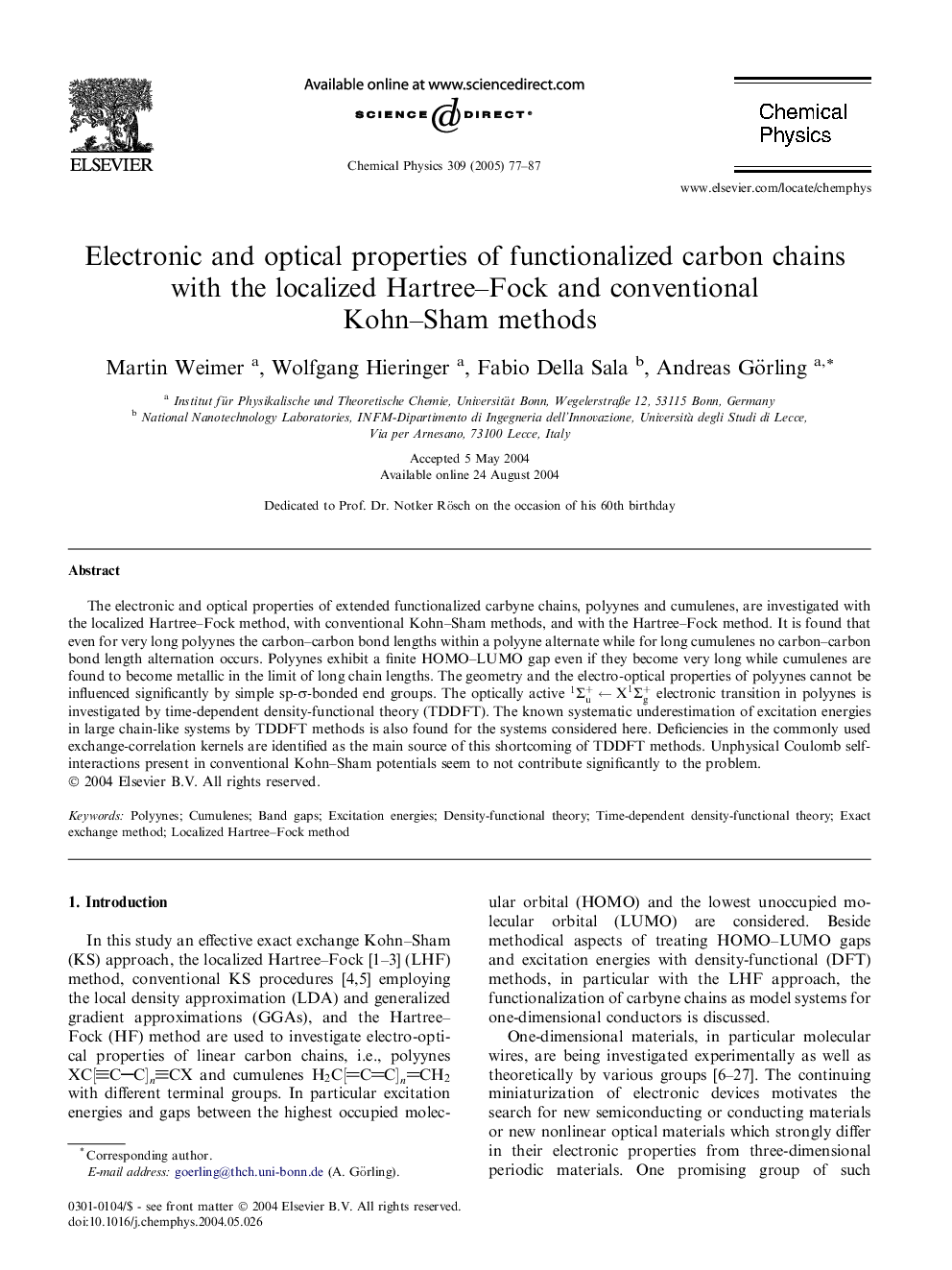| Article ID | Journal | Published Year | Pages | File Type |
|---|---|---|---|---|
| 9575617 | Chemical Physics | 2005 | 11 Pages |
Abstract
The electronic and optical properties of extended functionalized carbyne chains, polyynes and cumulenes, are investigated with the localized Hartree-Fock method, with conventional Kohn-Sham methods, and with the Hartree-Fock method. It is found that even for very long polyynes the carbon-carbon bond lengths within a polyyne alternate while for long cumulenes no carbon-carbon bond length alternation occurs. Polyynes exhibit a finite HOMO-LUMO gap even if they become very long while cumulenes are found to become metallic in the limit of long chain lengths. The geometry and the electro-optical properties of polyynes cannot be influenced significantly by simple sp-Ï-bonded end groups. The optically active 1Σu+âX1Σg+ electronic transition in polyynes is investigated by time-dependent density-functional theory (TDDFT). The known systematic underestimation of excitation energies in large chain-like systems by TDDFT methods is also found for the systems considered here. Deficiencies in the commonly used exchange-correlation kernels are identified as the main source of this shortcoming of TDDFT methods. Unphysical Coulomb self-interactions present in conventional Kohn-Sham potentials seem to not contribute significantly to the problem.
Keywords
Related Topics
Physical Sciences and Engineering
Chemistry
Physical and Theoretical Chemistry
Authors
Martin Weimer, Wolfgang Hieringer, Fabio Della Sala, Andreas Görling,
